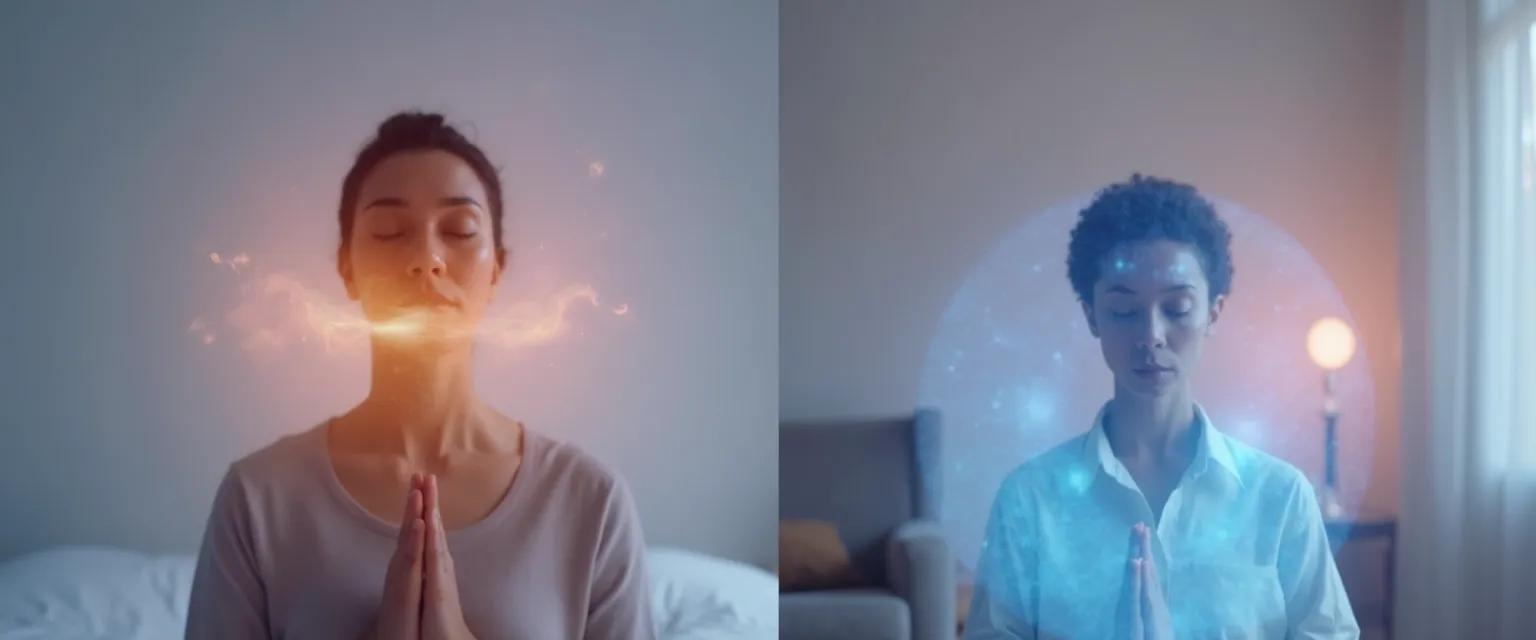Mindfulness Meditation for Anxiety: Breathing vs. Body Scan for Panic Attacks
Feeling overwhelmed by panic attacks? You're not alone. The rising popularity of mindfulness meditation for anxiety has given many people powerful tools to manage these intense moments. When your heart races and your thoughts spiral, having effective techniques at your fingertips makes all the difference. Two approaches stand out for their effectiveness: mindful breathing and body scan meditation. Both are science-backed mindfulness meditation for anxiety techniques that can transform your relationship with panic attacks.
Research shows that regular mindfulness meditation for anxiety reduces symptoms by up to 40% in many practitioners. The beauty of these techniques lies in their simplicity – they require no special equipment, can be practiced anywhere, and deliver immediate benefits. But which approach works better for panic attacks specifically? Let's explore how these anxiety management techniques compare and how to determine which might work best for your unique anxiety patterns.
Understanding the neurological mechanisms behind these practices helps explain why mindfulness meditation for anxiety is so effective. Both techniques activate your parasympathetic nervous system – your body's built-in calming mechanism – while helping you disengage from the thought patterns that fuel panic.
How Mindfulness Meditation for Anxiety Works: Understanding the Techniques
Mindful breathing is perhaps the most accessible mindfulness meditation for anxiety technique. It involves bringing focused attention to your breath – noticing the sensation of air entering and leaving your body without trying to change anything. During a panic attack, this technique grounds you in physical sensation rather than catastrophic thoughts.
To practice mindful breathing during anxiety:
- Find a comfortable position (sitting or standing)
- Place one hand on your chest and one on your abdomen
- Breathe naturally, noticing the rise and fall
- When thoughts intrude, gently return focus to the breath
Body scan meditation takes a different approach to mindfulness meditation for anxiety. Rather than focusing solely on breathing, you systematically direct attention throughout your entire body, noticing sensations without judgment. This technique excels at interrupting the mind-body anxiety cycle by creating awareness of where you're holding tension.
For a quick body scan during panic:
- Start with attention on your feet and ankles
- Slowly move attention upward through your body
- Notice areas of tension without trying to change them
- Acknowledge each sensation, then move on
Neurologically, both techniques activate the prefrontal cortex while reducing activity in the amygdala – your brain's anxiety alarm system. This physiological shift explains why consistent mindfulness meditation for anxiety practice creates lasting changes in how your brain processes stress.
Choosing the Right Mindfulness Meditation for Anxiety: Personal Factors
When selecting the best mindfulness meditation for anxiety technique for your panic attacks, consider your predominant symptoms. If you experience primarily physical symptoms (racing heart, shortness of breath), mindful breathing often provides faster relief by directly engaging with the respiratory system that's in distress.
Conversely, if your panic manifests as racing thoughts or a sense of disconnection from your body, the body scan technique may be more effective. By methodically reconnecting with physical sensations, you interrupt the mental spiral that fuels panic.
Timing also influences which mindfulness meditation for anxiety approach works best. Mindful breathing can be implemented in seconds, making it ideal for sudden onset panic. The body scan, while equally effective, typically requires slightly more time to complete but often provides more thorough relief for extended anxiety episodes.
Consider this quick self-assessment: During anxiety, do you feel more disconnected from your body (choose body scan) or fixated on breathing difficulties (choose mindful breathing)? Your answer provides valuable guidance on which technique to try first when managing anxiety symptoms.
Maximizing Your Mindfulness Meditation for Anxiety Practice
For lasting benefits, incorporate both mindfulness meditation for anxiety techniques into your daily routine – not just during panic attacks. Even 5 minutes of practice when calm strengthens neural pathways that make these techniques more effective during crisis moments.
Many people find that combining approaches works best: starting with mindful breathing to establish initial calm, then transitioning to a body scan for deeper relaxation. This comprehensive approach addresses both immediate symptoms and underlying tension patterns.
Success indicators include reduced panic attack frequency, shorter duration when they do occur, and increased confidence in your ability to manage anxiety. Track these metrics to validate that your mindfulness meditation for anxiety practice is working.
Remember that mindfulness meditation for anxiety is a skill that improves with practice. By experimenting with both techniques, you'll develop a personalized approach that addresses your unique anxiety patterns. With consistent practice, these simple but powerful tools transform your relationship with anxiety, putting you back in control even during life's most challenging moments.




